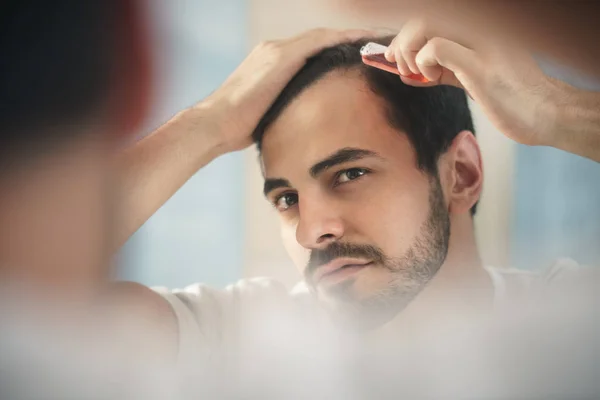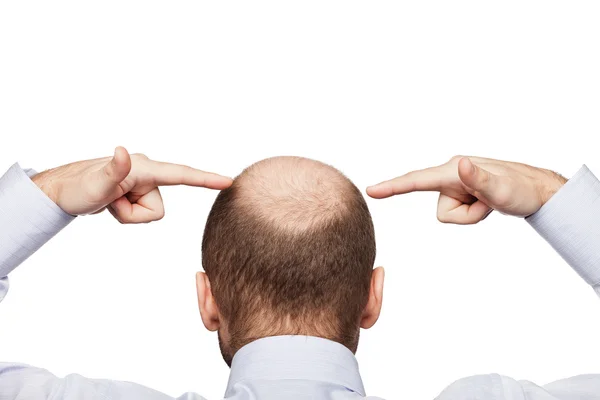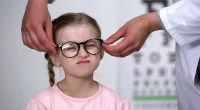The world of hair can be both a source of fascination and frustration. Many of us have experienced the worry of seeing a few extra hairs in the shower drain or on our pillows. Is it just hair shedding, a temporary and natural process, or is it something more concerning, requiring hair loss treatment by a dermatologist? In this comprehensive guide, we will unravel the mysteries behind hair shedding and hair loss, and when it’s time to seek the expertise of a dermatologist for effective treatment.
Table of Contents
Understanding Hair Shedding
Hair shedding, also known as telogen effluvium, is a common and natural phase in the hair growth cycle. It’s the process by which old or damaged hairs fall out to make way for new hair growth. Shedding is an integral part of the hair’s renewal process and is typically not a cause for alarm. However, excessive or sudden shedding can be disconcerting.

Causes of Hair Shedding:
- Normal Hair Growth Cycle: As part of the hair growth cycle, individuals typically shed 50 to 100 hairs daily. These are usually hairs in the telogen phase, which is the resting phase of the hair cycle.
- Seasonal Changes: Many people experience increased shedding during certain seasons, particularly in the fall. This phenomenon is referred to as seasonal shedding and is considered normal.
- Stress: Physical or emotional stress can trigger hair shedding. This condition, known as telogen effluvium, is often temporary and reversible.
- Dietary Deficiencies: Inadequate nutrition, particularly deficiencies in essential vitamins and minerals like iron and biotin, can lead to increased shedding.
- Illness or Surgery: Serious illnesses, surgeries, or traumatic events can disrupt the hair growth cycle and result in temporary shedding.
- Medications: Some medications, such as chemotherapy drugs, can lead to hair shedding as a side effect.
Treatment for Hair Shedding:
The treatment for hair shedding primarily depends on its cause. In many cases, addressing the underlying cause, such as reducing stress, improving nutrition, or discontinuing medications, can resolve shedding issues. If shedding persists or is severe, consulting a healthcare professional or dermatologist is advisable for a thorough evaluation and tailored treatment plan.
Understanding Hair Loss
Hair loss, also known as alopecia, is a more permanent and often progressive condition characterized by a significant reduction in hair density or complete hair loss in specific areas. Unlike shedding, hair loss typically does not resolve on its own and often requires specific treatments to manage or reverse.

Causes of Hair Loss:
- Androgenetic Alopecia: Also known as male pattern baldness or female pattern baldness, this is the most common cause of hair loss and is often genetically determined.
- Alopecia Areata: This is an autoimmune disorder in which the immune system mistakenly attacks hair follicles, leading to hair loss in patches.
- Scarring Alopecia: Certain skin conditions or injuries can lead to scarring of the hair follicles, preventing hair from regrowing.
- Traction Alopecia: Excessive pulling or tension on the hair, often due to tight hairstyles, can lead to hair loss in specific areas.
- Medical Conditions: Hair loss can be a symptom of various medical conditions, including thyroid disorders and polycystic ovary syndrome (PCOS).
- Medications: Some medications, such as certain contraceptives and antidepressants, can cause hair loss as a side effect.
Treatment for Hair Loss:
The treatment for hair loss depends on the underlying cause and the severity of the condition. Here are some common approaches to addressing hair loss:
- Medications: FDA-approved medications like minoxidil and finasteride are often prescribed to slow down hair loss and stimulate hair regrowth.
- Topical Treatments: Hair growth-promoting shampoos, serums, and topical solutions containing active ingredients like minoxidil can be beneficial.
- Hair Transplantation: In cases of advanced hair loss, surgical procedures such as Follicular Unit Transplantation (FUT) or Follicular Unit Extraction (FUE) may be considered to transplant healthy hair follicles to balding areas.
- Low-Level Laser Therapy (LLLT): LLLT devices, such as laser combs or helmets, are designed to stimulate hair follicles and promote regrowth.
- Platelet-Rich Plasma (PRP) Therapy: PRP therapy involves injecting a concentration of the patient’s own platelets into the scalp to stimulate hair follicles.
- Lifestyle Changes: Adopting a healthy lifestyle, managing stress, and maintaining a balanced diet can support overall hair health.
Distinguishing Between Shedding and Hair Loss
It’s crucial to differentiate between hair shedding and hair loss to determine the appropriate course of action:
Shedding:
- Temporary: Shedding is typically temporary and often occurs in response to triggers such as stress, illness, or seasonal changes.
- Even Distribution: Shedding involves the shedding of individual hairs scattered across the scalp, with no distinct bald patches.
- Normal Growth Cycle: Shedding is a natural part of the hair growth cycle, and the hair usually regrows once the triggering factor is resolved.
Hair Loss:
- Progressive: Hair loss is often progressive and does not spontaneously resolve. It may lead to visible bald patches or areas of significant hair thinning.
- Patterned or Patchy: Hair loss can occur in distinct patterns (male or female pattern baldness) or in patches (alopecia areata).
- Underlying Conditions: Hair loss is frequently associated with underlying medical conditions or genetic predisposition.
When to Seek a Dermatologist for Hair Loss Treatment

While some hair shedding is normal, seeking the expertise of a dermatologist for hair loss treatment may be necessary under the following circumstances:
- Excessive or Prolonged Shedding: If shedding is severe, prolonged, or not related to known triggers like stress or seasonal changes, consulting a dermatologist is advisable to rule out underlying issues.
- Noticeable Hair Thinning or Bald Patches: If you observe significant hair thinning, bald patches, or changes in hair density, it’s essential to seek professional evaluation and treatment.
- Family History of Hair Loss: If you have a family history of hair loss, particularly androgenetic alopecia, consulting a dermatologist early on can help in implementing preventive measures.
- Signs of Scalp Conditions: If you experience itching, redness, or other scalp issues accompanying hair loss, a dermatologist can diagnose and treat potential scalp conditions.
- Failed Home Remedies: If over-the-counter treatments or home remedies have not yielded positive results, a dermatologist can offer more effective and tailored solutions.
The Role of a Dermatologist in Hair Loss Treatment
Dermatologists are medical specialists with expertise in diagnosing and treating hair and scalp conditions. When you consult a dermatologist for hair loss treatment, you can expect the following:
- Comprehensive Evaluation: A dermatologist will conduct a thorough examination of your scalp and hair to determine the cause of your hair loss.
- Diagnostic Tests: In some cases, diagnostic tests such as blood tests or a scalp biopsy may be required to pinpoint the exact cause of hair loss.
- Tailored Treatment: Based on the diagnosis, a dermatologist will recommend a personalized treatment plan that may include medications, topical treatments, lifestyle changes, or advanced procedures.
- Monitoring and Follow-Up: Regular follow-up appointments allow the dermatologist to track your progress and make adjustments to the treatment plan as needed.
- Education and Support: Dermatologists provide education on hair care practices and offer support throughout your hair loss treatment journey.
In Conclusion
Understanding the difference between hair shedding and hair loss is essential for effective management and treatment. Shedding is a natural and often temporary part of the hair growth cycle, while hair loss may be a more persistent condition requiring specialized attention. If you are concerned about changes in your hair or scalp, don’t hesitate to consult a dermatologist. Their expertise can help you identify the cause of your hair issues and guide you toward effective treatment options, ultimately restoring your confidence and hair health.
You may also like | 11 Best Exercises for Men to Get a Lean Waistline









